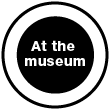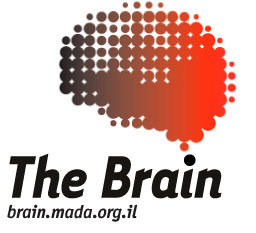


 |
||
 |
||
|
The dragon in this display is a stationary figure. But if you concentrate, you'll discover an amazing illusion - the creature seems to be following you as you move. The reason is that the dragon's face appears to be convex (bulging outward), when it's really concave (recessed back). This illusion demonstrates the impact of our past experience. Our tendency to see faces as convex counters the clues indicating that this particular face is concave. When we change our point of view, the picture reaching our eyes also changes, but in the exact opposite direction to what we expect. The brain interprets what we see as the dragon turning its head to follow our movements. As we move around our world, even when we just shift our eyes a bit, the pictures of stationary objects our eyes receive change all the time. Yet we know it's not the objects that are moving; it's our perspective that's changing. The brain uses information from the outside environment, information from the internal environment (muscle actions in the legs, eyes, and neck, for instance), and even its own command system for movement to determine what's going on. Are we moving? Is the object moving? Perhaps we're both moving. Research has shown that our brains build a model of a change that's likely to take place, and when conditions are exactly in line with that model, no illusion is created. When the change that takes place does not coincide with our brain's model, we sense that the object is moving. Let's try to demonstrate how the dragon illusion works: Raise the index finger on each hand, and hold them out in front of your face. Now, close one eye, and place your fingers so that the right one is closer and the left one is directly behind it (so that an imaginary straight line extends from your eye, through right finger, directly to your left finger). From this position, there are at least three ways you can make your left finger appear to be further left than your right finger: (1) Move your left finger to the left, (2) Move your right finger to the right, or (3) Turn your head to the left. Even though we see exactly the same thing with each of these methods, the brain easily distinguishes between them. The dragon illusion is parallel to a theoretical situation in which we envision our left finger placed behind our right finger, but the opposite is actually true - our right finger is placed behind our left finger. When you move your head to the left, you expect, like before, to see your left finger further left than your right finger. But, to your surprise, the opposite happens. Therefore, your brain concludes that it's your hands that are moving and following the movement of your head. The key to the dragon illusion is our false perception that a concave face is really a convex face - just like our false perception of where are fingers are placed. The brain's tends to perceive faces as convex because this is what its prior experience has taught it. Link: Related exhibit:
|
||

 The Dragon's Gaze
The Dragon's Gaze